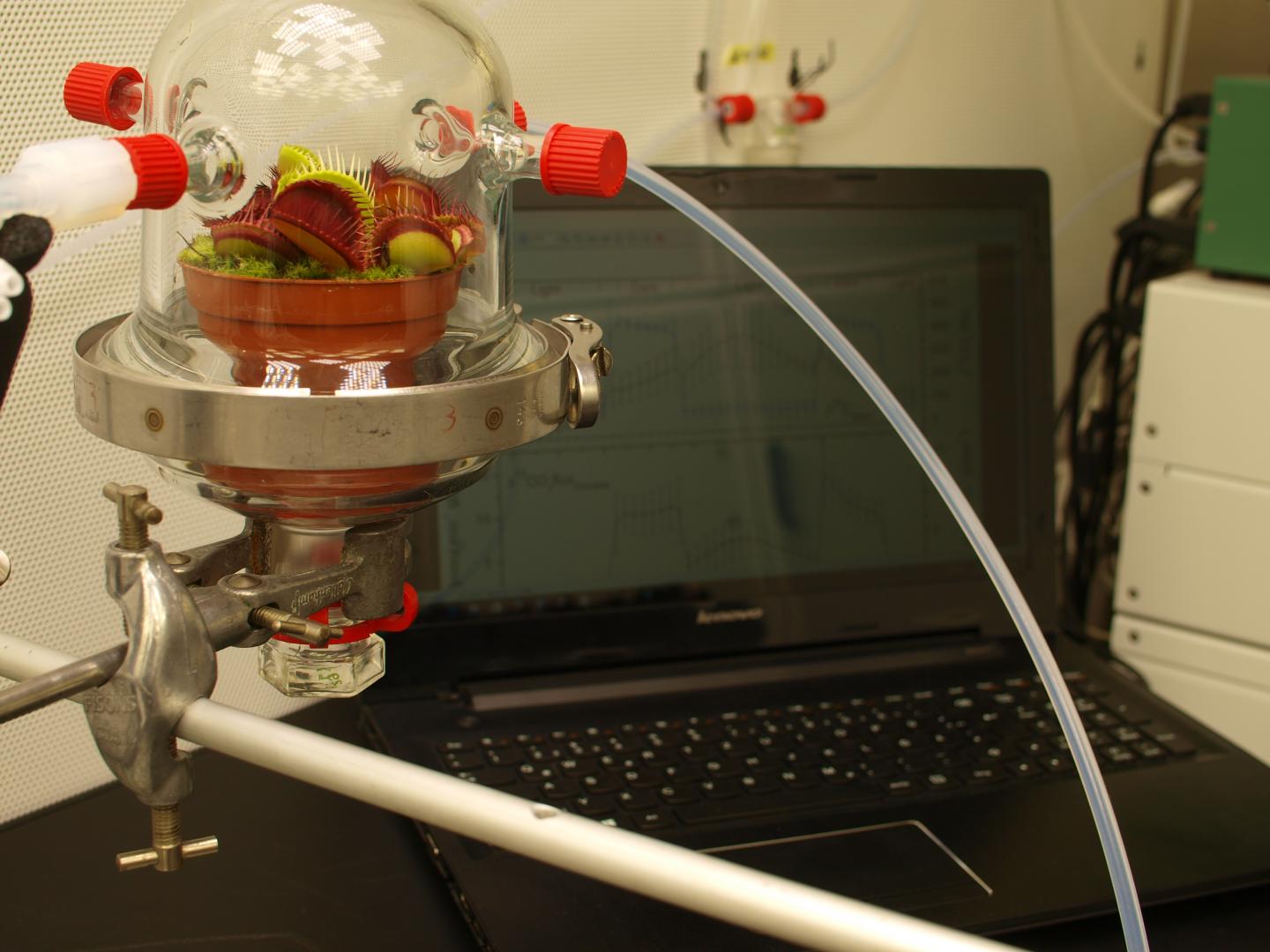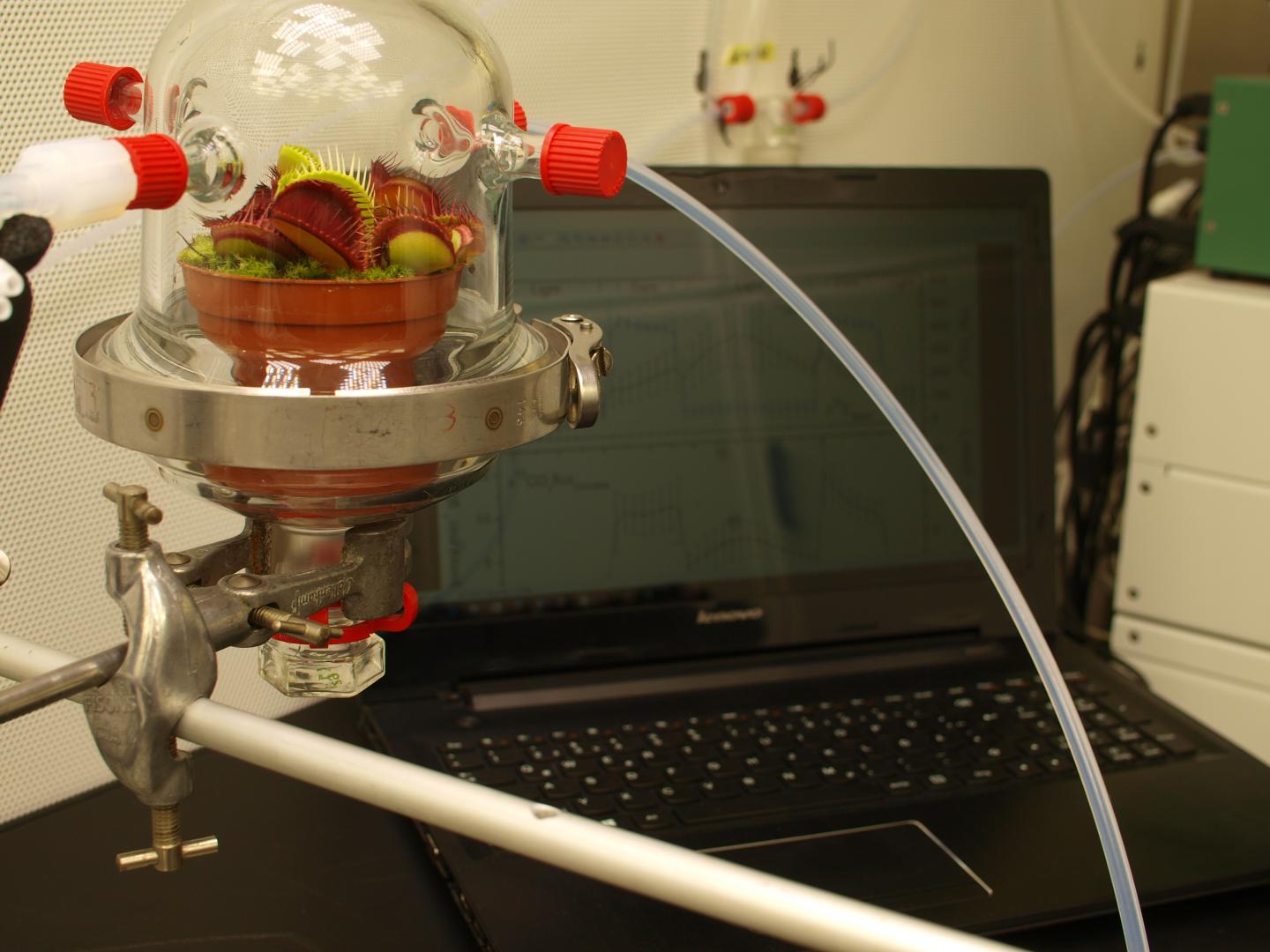
Credit: Photo: Lukas Fasbender
The Venus flytrap captures insects for more than just nutritional purposes: A research team lead by Prof. Dr. Heinz Rennenberg and Lukas Fasbender from the Institute of Forest Sciences at the University of Freiburg has proven the carnivorous plant extracts also energy from its prey. The scientists recently presented their findings in the scientific journal New Phytologist.
The Venus flytrap can be found in the United States in areas with nutrient-depleted soil. The plant compensates for its environmental limitations by trapping insects in their outer green stomach: specialized leaf traps, which decompose the insects with the help of digestive juices. By doing so, they are able to extract nutrients such as phosphorous and nitrogen lacking in the soil, but which are present in the insects themselves. Up until now, researchers assumed that energy production played no part in the process because they thought the oxidation from photosynthesis was sufficient for the plant's energy needs. With the help of light energy during photosynthesis, oxygen and glucose are produced from carbon dioxide and water. The sugar can be transformed into energy through respiration, whereby carbon dioxide is emitted.
Through their experiment, researchers have discovered that the Venus flytrap indeed extracts energy from its prey. In order to prove their theory, the researchers placed artificial nutrients – a solution laced with the amino acid glutamine – into the leaf traps of the plant. They used stable, non-radioactive 13C-isotopes, differing from other carbon atoms due to their higher mass, to label the glutamine carbon. With the help of an infrared laser they were able to prove that these 13C-isotopes from the prey occured in the carbon dioxide that the plant emitted, starting about one to two hours after feeding.
The scientists now assume that the process of ingestion and energy production in the Venus flytrap is more complex than thought: The carnivorous plant thus uses the energy it receives during photosynthesis to begin the digestive process and to access nutrients. In order to maintain this process, it produces additional energy by oxidizing amino acids that it extracts from its prey, thereby gaining access to yet another energy source.
###
Heinz Rennenberg is a Professor for Tree Physiology. Lukas Fasbender is a doctoral student for the Chair of Ecosystem Physiology in the Faculty for the Environment and Natural Resources at the University of Freiburg.
Originalveröffentlichung:
Lukas Fasbender, Daniel Maurer, Jürgen Kreuzwieser, Ines Kreuzer, Waltraud X. Schulze, Jörg Kruse, Dirk Becker, Saleh Alfarraj, Rainer Hedrich, Christiane Werner and Heinz Rennenberg (2017): The carnivorous Venus flytrap uses prey-derived amino acid carbon to fuel respiration. In: New Phytologist, doi: 10.1111/nph.14404
Media Contact
Heinz Rennenberg
[email protected]
49-761-203-8301
############
Story Source: Materials provided by Scienmag




